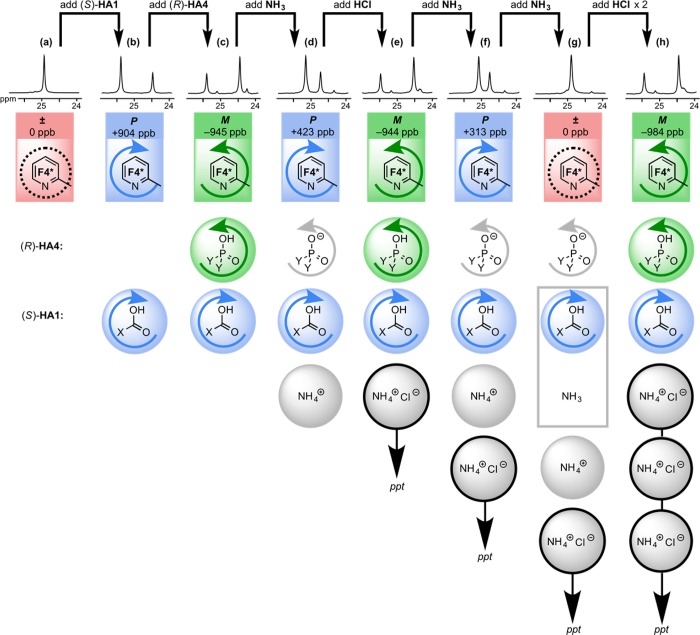Figure 6.
Conformational switching of foldamer F4* with competing chiral ligands. [F4*] = 10 mM, CDCl3, 296 K; all subsequent additions are of 1.5 equiv relative to F4*. Portions of the 13C NMR spectra of the mixtures containing the labeled signals of F4* are shown, with anisochronicity Δδ reported as the difference in chemical shift between the major and minor labeled signals of F4*, δmaj – δmin, measured in ppb. Protonated species available for interaction with the F4* binding site (represented by the pyridine in the colored rectangle) are indicated by blue/green (for chiral species) or gray (for achiral species) disks, and acids HA are stacked in order of pKa in CDCl3. The number of protons available is represented by the number of discs, building up from the bottom of the stack. Proposed conformation-inducing interactions with F4* (whether these are hydrogen-bonded or ion-paired is left undefined) are coded by matched colors: blue indicates induction of a P screw-sense; green indicates induction of an M screw-sense; red indicates no screw-sense induction. The most significant interaction is assumed to be between F4* and the top (typically the most acidic) protonated species in each multiply protonated stack.

